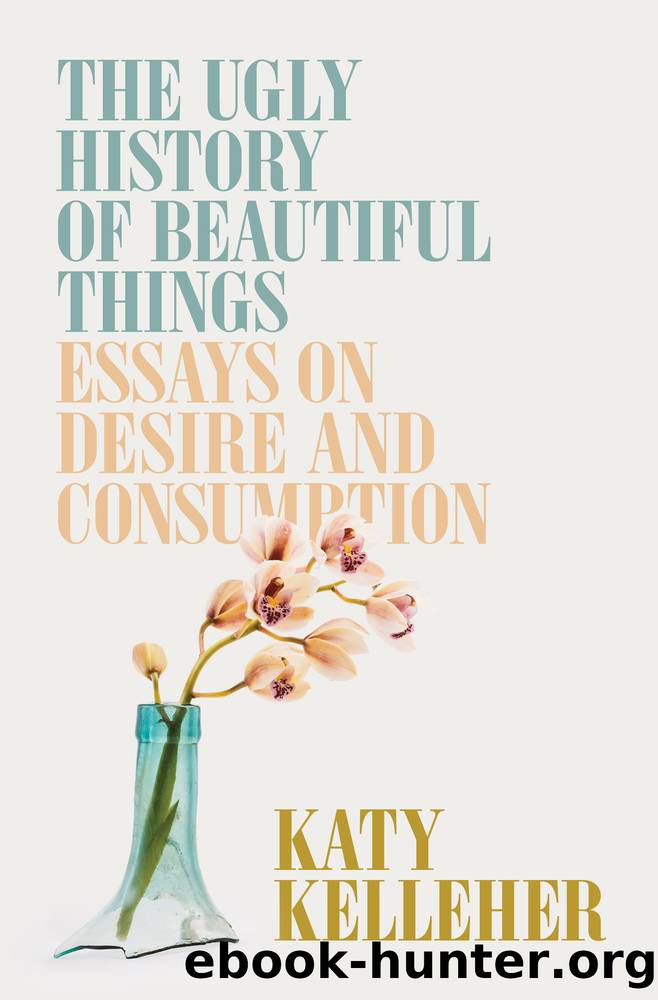The Ugly History of Beautiful Things: Essays on Desire and Consumption by Katy Kelleher

Author:Katy Kelleher
Language: eng
Format: epub
Publisher: Simon & Schuster
Published: 2023-04-25T00:00:00+00:00
* * *
Professor Schwarczâs book offers one reason why weâre drawn to animalic scents, citing studies that suggest people with ovaries could be more sensitive to musk, particularly around ovulation. He cautiously speculates that musk might resemble chemicals produced in humans to attract potential mates.
Over the phone, he is even more wary of speculating about a possible evolutionary explanation for our fragrance preferences. âThe sense of smell has been studied thoroughly, with surprisingly little results in terms of what we actually know. Itâs such a complicated business,â he said. âWe donât know why musk is more attractive to some people than others. We donât know why it smells differently when itâs diluted, but we know that it does.â When I asked whether we like musk because weâre programmed to enjoy the smells of bodies, he was quick to turn our talk toward the âissue of pheromones,â which âmay not actually even exist at allâ in humans, despite our desire to attribute various observed phenomena to the invisible messengers. According to Schwarcz, much of what the general population thinks they know about pheromones only applies to certain nonhuman species. For instance, boar pheromones are well understood, easy to replicate, and used by farmers to increase the farrowing rate amongst their stock. Some of the perfumes that boast âreal pheromones,â like Jovan Musk and Paris Hiltonâs eponymously named scents, may indeed contain pheromone moleculesâbut only ones that pigs would find very enticing. However, the marketing copy used to promote supposedly scientifically backed fragrances doesnât often reveal this inconvenient fact. Instead, weâre led to believe that human pheromones can be bottled and sold, that attraction is quantifiable, that desire follows certain logical lines.
But like Diamond Doris and her learned lust for diamonds, we covet the scents that weâre told to want by magazines and advertisements. When we walk into a department store, weâre often drawn forward not by the smell of a perfume but by its persona. Weâre all familiar with this kind of imagery, the pretty pictures of celebrities with glossy lips and perfect hair, photoshopped spokeswomen for femininity and its accoutrements. They help sell us desire, but they also help sanitize and sublimate it. Behind the pseudoscientific marketing talk and the glamorous girls hides the same rutting impulse. Commercial perfumers market scents as pheromone-laden because they know that calling them âsecretion-scentedâ would be a harder sell. They are coyly tiptoeing around the issue, which allows consumers to do the same. Most people donât want to admit even to themselves that theyâre looking for a product that mimics human stinkâvaginas, anuses, armpitsâbut those are the base notes in so many scents, including my beloved âcleanâ fragrances. If you think thatâs disgusting, well, I think thatâs also the point. If we can unhitch it from shame, gross can be good.
For perfumer Anne Serrano-McClain, co-owner of MCMC Fragrances in Brooklyn, it is the tension between foul and sweet that elevates a fragrance from consumer product into the realm of art. This is key when it comes to repugnant ingredients, from indolic florals to musky secretions.
Download
This site does not store any files on its server. We only index and link to content provided by other sites. Please contact the content providers to delete copyright contents if any and email us, we'll remove relevant links or contents immediately.
Born to Run: by Christopher McDougall(7091)
The Leavers by Lisa Ko(6931)
iGen by Jean M. Twenge(5387)
Sapiens by Yuval Noah Harari(5325)
Spare by Prince Harry The Duke of Sussex(5142)
The Kite Runner by Khaled Hosseini(5134)
Machine Learning at Scale with H2O by Gregory Keys | David Whiting(4262)
Bullshit Jobs by David Graeber(4143)
Never by Ken Follett(3885)
Goodbye Paradise(3766)
Livewired by David Eagleman(3730)
Fairy Tale by Stephen King(3310)
A Dictionary of Sociology by Unknown(3044)
Harry Potter 4 - Harry Potter and The Goblet of Fire by J.K.Rowling(3033)
The Social Psychology of Inequality by Unknown(2990)
The Club by A.L. Brooks(2894)
Will by Will Smith(2875)
0041152001443424520 .pdf by Unknown(2820)
People of the Earth: An Introduction to World Prehistory by Dr. Brian Fagan & Nadia Durrani(2711)
